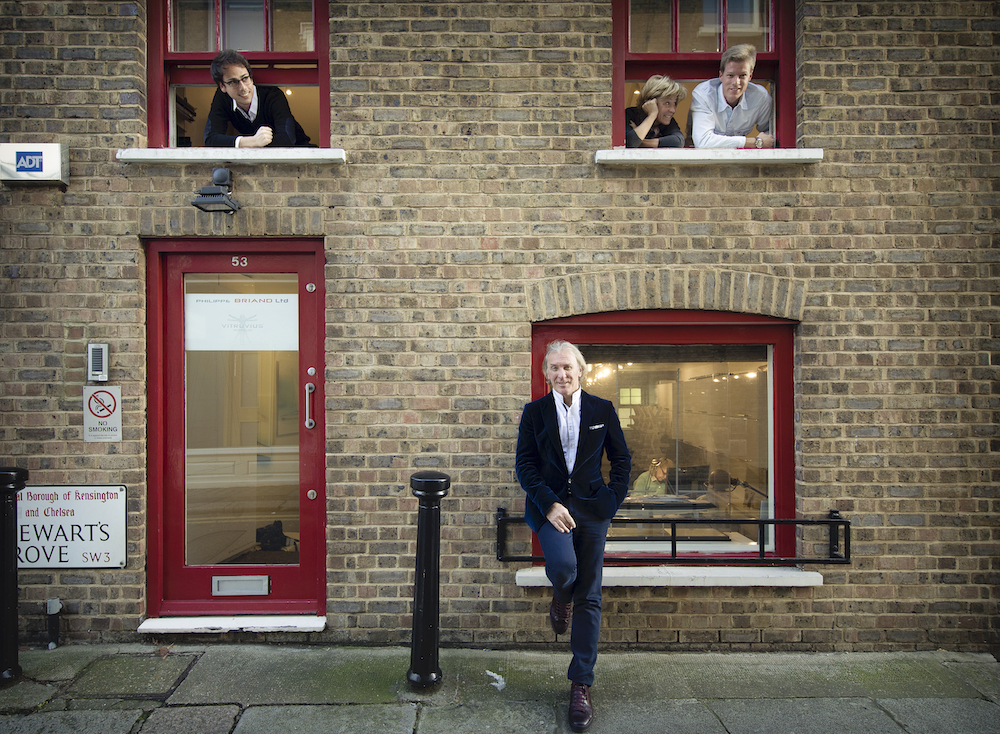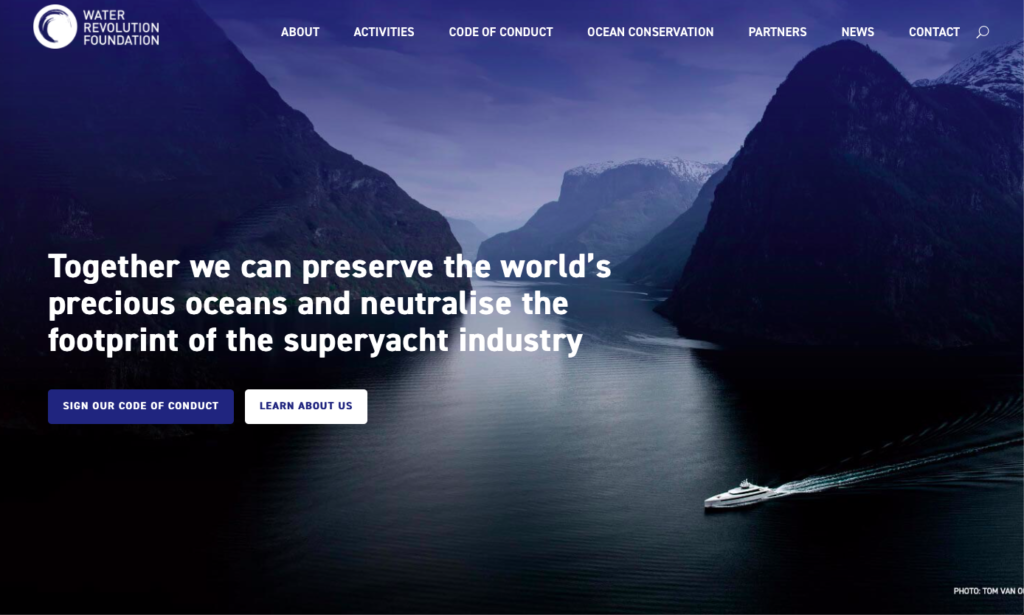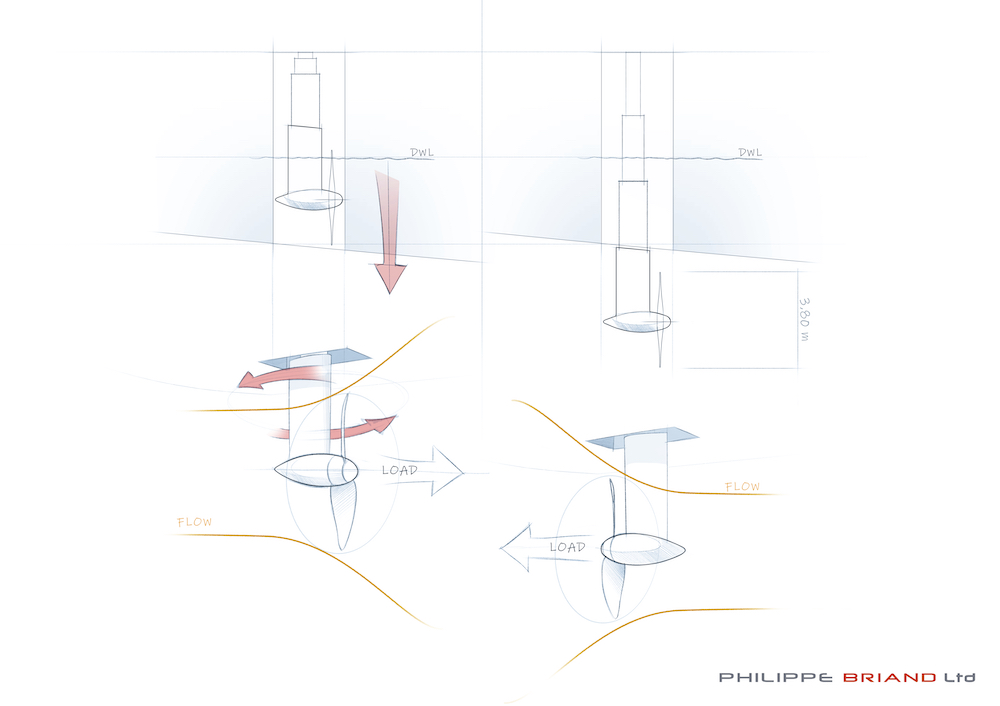Not just reducing fuel consumption but a whole new philosophy. For Philippe Briand, it’s never too late to create the future.
“We want to work alongside ship owners to create the perfect renewable energy machine, using the power of wind, water and sun to manage the yacht, and offer an exceptional experience both of onboard peace and exploration of the sea.” The words of naval architect and designer, Philippe Briand, as he explains the motivation behind three of his latest concepts. Philippe Briand is, of course, one of the great design talents of today (Briand Studio). His masterful work spans everything from the Vitruvius motoryacht line concepts to America’s Cup Classes, a long list of racers and cruisers of all shapes and sizes, and glorious superyachts of the likes of the 67m Alloy Yachts’ Vertigo and the 70m Perini Navi Sybaris.

Philippe Briand – Interview by Top Yacht Design
The development of the latter projects, particularly with regard to masts and equipment, also influenced the concepts for a 300’ ketch, a 200’ sloop and a 60m schooner. All of these superyachts share a focus on sustainability and are part of a broader vision of how design should and will evolve in the future. The unknowns of the post-COVID-19 scenario aside, Briand feels that reaching the “green turning point” will be driven not just by the urgent need to reduce fossil fuel emissions by transitioning to renewables but also the imperative to include the superyacht world in a virtuous circle. This thinking has produced of the Water Revolution Foundation of which Philippe Briand is one of the founders. We asked him about the initiative and what his vision for the future is.

Philippe Briand and sustainability
At such a difficult time in history for the whole world, thinking about sustainability is a duty rather than a choice. You have always focussed your career on sustainability and you are also a founder member of Water Revolution. Can you tell us more about it?
Our industry is in our world! More importantly, it is duty-bound to set an example. We have wealthy clients trusting us to create the most state-of-the-art superyachts for them but which will also need to have a minimal impact on the sea and environment. So Water Revolution is there to remind the industry this is critical and that is why we have the top shipyard and professionals as partners.

Philippe Briand and the Water Revolution
What kind of results has Water Revolution delivered after its first two years?
2019 was mainly spent gathering financial support, creating visibility, and getting to work on analysing our industry’s status. On this last point, we successfully created a software tool called YAT (Yacht Assessment Tool) to calculate the environmental footprint (all greenhouse gas emissions) of the construction of our design, Najiba, as a “poster child”. We then applied the further-optimised software tool to the environmental impact of other yachts over a 20-year lifespan. Others WRF members are continuing to calculate for further superyachts.

Philippe Briand and superyacht sector
What goals does the superyacht sector need to set for the post-crisis world?
It is never too late to create the future and this is our job as designers who want to drive the industry forward. Personally, I am for taking action, for example to define common goals to reduce the carbon footprint of superyachts. This may require some specific R&D on conventional energy supplies on our boats and will likely lead to alternative energy.

Philippe Briand – Yacht design
You have spoken about “lateral thinking”. What do you mean by that in a design context?
I am referring to the sailing superyacht sector. An area of the industry driven from the start by pioneers, yards, naval architects, and advisers from the racing scene. For over 40 years, we been collectively developing extraordinarily sophisticated machines to win races. I am proud to be part of that. But the racing scene has become very small. The costs, however, are extremely high. Therefore, right now I suggest recalibrating our aspirations. A sailing yacht is potentially the ultimate windmill machine, and so can create its own energy. New goals, new challenges, new fair competition on the playing field of sustainability. We need to retain the essentials and strike a fine balance, enjoying every minute on board surrounded by what this planet has to offer. I think this is what sailing should be all about. Not a competition nor a commercial opportunity. This is the kind of lateral thinking I want to propose to new owners.

Philippe Briand – Sustainability and yachting
You operate in the world of large custom motor and sailing yachts but also in the world of series production. Does the approach to sustainability change between the latter sectors?
The reason we operate in different sectors is that I believe the design ingredients for a successful yacht are the same. Our skill is knowing how to balance them appropriately to produce a state-of-the-art yacht. I consider sustainability as one of the main “subjects to work on” in any area we might succeed. For sustainability reasons, it is important to optimise hull lines on sailing and motor yacht as this implies efficiency. Right now, all of our projects feature a renewable energy-related element. But, I believe the most important parameter might be to design the best “compact“ boat that would still match our client’s specs and lifestyle. Not merely pushing owners to build the biggest as the industry has done too many times in the past. Series production design is the best teacher in terms of optimisation.

Is sustainability linked to the size of the yacht or can it be a more general subject?
Yes, the impact is directly related to size. It is actually exponentially related to it.

Philippe Briand and the Adaptive Wing Schooner
Your two concepts – the SY300 and SY200 and the Adaptive Wing Schooner – have sustainability in terms of energy self-sufficiency as their common feature. Where did they come from?
They came from the same spirit and are part of the same family. The differences lie in their propulsion by which I mean their rigs. I believe the real state-of-the-art rig is actually a highly developed sloop which delivers the best performance in all conditions. However, 250’ is the limit for a sloop because of manoeuvring and available technology. Above that size, we might have to return to the traditional sail area division and so that would mean a ketch. If we had to consider anything larger than 300’, we would look at a Dyna rig.

Another common element is the plumb bow. Which did you choose this particular one and what else do the SY300 and SY200 have in common in terms of naval engineering?
The plumb line is the most efficient bow. If losing length on the deck is acceptable, then a reverse bow is a possibility too and brings an aggressive kind of sex appeal. The America ‘s Cup boats have made this look popular but is not a major plus for a yacht. Both projects stem from the same design ingredients, but differ in their size and what their size permits. Hence, the 300’ has three decks compared to one and a half on the 200’.

Philippe Briand and the sustainability on smaller yachts
Are these solutions from the concepts transferable to smaller yachts?
Yes, we are developing those projects as “concept cars” to test the market and also to push ourselves. I can already see applications to a future smaller project of 40 m.

There are changes coming and not just for superyachts. To which elements must all yachting stakeholders commit? Which will you personally be involved with?
Progress is why the industry exists. But to be frank, I think we have a huge step ahead of us, may be bigger than anything that has come before. As designer, I find this extremely motivating! It relates mostly to the energy or power used throughout the lifespan of the yacht as that is the factor we can influence. Wße need to consider year-round consumption as you can think of yachts as a luxury hotel that needs to be autonomous all year round and not only when the owners are on board as that is just a small portion of the operating profile.






